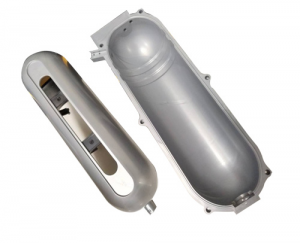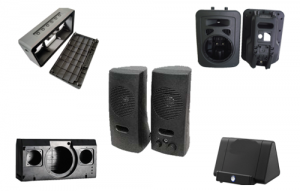Medical plastic injection mold and molding
Short Description:
MESTECH produces medical plastic injection mold and injection production. The main products include:Injection syringe, disposable syringe, connector, transparent plastic cover, straw, medical box, container, surgical tools, drum clamp, plastic needle, tool box, diagnostic device and hearing aid housing, as well as some medical equipment enclosure.
MESTECH produces medical plastic injection mold and injection production. The main products are:
Injection syringe, disposable syringe, connector, transparent plastic cover, straw, medical box, container, surgical tools, drum clamp, plastic needle, tool box, diagnostic device and hearing aid housing, as well as some medical equipment enclosure.
There are many standards for making medical moulds. Almost every different product has different standards. China is the largest producer of medical plastic moulds in the world. The requirement of medical mould is really very high. The main production standard is embodied in products, such as many medical products with Ruhr joints. This is a production standard. If the mould factory does not understand this standard, it will be troublesome. There are also many mould standards with national standard for product size, which are mainly in full automatic production, multi-cavity, and no burr flying edge.
Common Medical Injection Molding Products
1. Hemodialysis pipeline, respirator mask, oxygen inhalation tube, artificial blood vessel, etc.
2. Artificial buttocks, knees and shoulders.
3. Packaging, syringe, disposable syringe, connector, transparent plastic cover, pipette,
4. Cups, caps, bottles, cosmetics packaging, hangers, toys, substitutes for PVC, food packaging and medical bags
5.Surgical tools, drum clips, plastic needles, tool boxes, diagnostic devices and hearing aids housing, especially the housing of some large medical equipment
6. Blood dialysis filters, surgical tool holders and oxygen tanks, artificial blood vessels
7. Artificial blood vessels, cardiac membranes, endoscopes, forceps, trachea
Requirements for medical plastic products
Components in plastic materials can not be precipitated into the liquid or human body, and will not cause toxicity and damage to tissues and organs. It is non-toxic and harmless to human body. The basic requirement of medical plastics is chemical stability and biosafety because of contacting with liquid medicine or human body. In order to ensure the bio-safety of medical plastics, medical plastics usually sold on the market are certified and tested by medical authorities, and clearly inform users which brand is medical grade.
At present, a considerable number of medical plastic materials have not been strictly certified as bio-safety, but with the gradual improvement of regulations, these conditions will be improved. Medical plastics in the United States usually pass FDA certification and USPVI biological testing, while medical plastics in China also have professional medical device testing centers. According to the structure and strength requirements of the equipment products, we choose the appropriate plastics type and brand, and determine the processing technology of the materials. These properties include processing performance, mechanical strength, use cost, assembly method, sterilization and so on.

medical plastic enclosures

Plastic parts for medical
There are certain requirements for the production environment of medical plastic products
Medical plastic products are usually made by injection moulding, which requires not only the plastic materials used, but also the environment of injection moulding for different medical plastic products.
For implanted human body or containers and syringes containing medicines and liquids, the production environment is dust-free, and the production process and packaging are strictly operated in a dust-proof environment. For some common medical equipment and instruments, the shell requirements are much more relaxed, so it can be produced in general production environment.
Classification of commonly used medical plastics
Plastics can be used in medical plastics with low cost, without disinfection and reuse, and suitable for the production of disposable medical devices; it is easy to process, and can be processed into various useful structures by using its plasticity, while metal and glass are difficult to produce products with complex structures; it is tough and elastic, not as fragile as glass; good chemical inertia and raw materials. Product safety.
These advantages make plastics widely used in medical equipment, including polyvinyl chloride (PVC), polyethylene (PE), polypropylene (PP), polystyrene (PS), polycarbonate (PC), ABS, polyurethane, polyamide, thermoplastic elastomer, polysulfone and polyetheretherketone. Blending can improve the properties of plastics and make polycarbonate / ABS, polypropylene / elastomer and other resins have the best properties.
The eight commonly used medical plastics are polyvinyl chloride (PVC), polyethylene (PE), polypropylene (PP), polystyrene (PS) and K resin, acrylonitrile butadiene styrene (ABS), polycarbonate (PC) and polytetrafluoroethylene (PTFE). After the synthesis of ordinary plastics, they are all powdery powders and cannot be used for direct production of products. This is what people often say from trees. The fat extracted from juice is the same, also known as resin, also known as powder. This is pure plastic. It has poor fluidity, low thermal stability, easy aging and decomposition, and is not resistant to environmental aging.
The eight commonly used medical plastics are polyvinyl chloride (PVC), polyethylene (PE), polypropylene (PP), polystyrene (PS) and K resin, acrylonitrile butadiene styrene (ABS), polycarbonate (PC) and polytetrafluoroethylene (PTFE). After the synthesis of ordinary plastics, they are all powdery powders and cannot be used for direct production of products. This is what people often say from trees. The fat extracted from juice is the same, also known as resin, also known as powder. This is pure plastic. It has poor fluidity, low thermal stability, easy aging and decomposition, and is not resistant to environmental aging.
In order to improve these defects, heat stabilizers, anti-aging agents, anti ultraviolet agents and plasticizers are added to the resin powder. After granulation modification, the fluidity of resin powder is increased, and various kinds of plastics with special properties and different grades are produced. The plastics commonly used by medical device manufacturers are modified plastic particles that can be used directly. For products with special properties that are not available on the market, equipment factories can introduce granulation production lines to process and produce plastic particles through different formulation designs. Therefore, there are many brands of the same plastic variety. According to the processing method, there are injection grade, extrusion grade and blown film grade; according to the performance, there are many brands,
The plastics used in the manufacture of medical products are:
1. Polyvinyl chloride (PVC)
According to market estimates, about 25% of medical plastic products are PVC. PVC is one of the largest plastic products in the world. PVC resin for white or light yellow powder, pure PVC random structure, hard and brittle, rarely used. Different additives can be added according to different uses to make PVC plastic parts have different physical and mechanical properties. Various rigid, soft and transparent products can be made by adding proper amount of plasticizer to PVC resin.
Rigid PVC does not contain or contain a small amount of plasticizer. It has good tensile, bending, compression and impact properties, and can be used as a structural material alone. Soft PVC contains more plasticizers. Its softness, elongation at break and cold resistance increase, but its brittleness, hardness and tensile strength decrease. The density of pure PVC is 1.4g/cm3. The density of PVC parts with plasticizers and fillers is usually in the range of 1.15-20 g / cm3. This is mainly due to its low cost, wide application and easy processing. The medical applications of PVC products include: hemodialysis pipeline, breathing mask, oxygen tube, etc.
2. Polyethylene (PE):
Polyethylene plastic is the highest yield variety in the plastic industry. They are milky white, odorless, and non-toxic glossy waxy particles. It is characterized by low price and good performance. It can be widely used in industry, agriculture, packaging and daily use industry. It plays an important role in the plastic industry.
PE mainly includes low density polyethylene (LDPE), high density polyethylene (HDPE) and ultra high molecular weight polyethylene (uhdpe). HDPE has less branched chain, higher relative molecular weight, crystallinity and density, higher hardness and strength, poor opacity and higher melting point. It is usually used for injection molded parts. LDPE has many branched chains, so it has low relative molecular weight, low crystallinity and density, and has good flexibility, impact resistance and transparency. It is usually used for film blowing and is a widely used alternative to PVC. HDPE and LDPE can also be mixed according to the performance requirements. Uhdpe has high impact strength, low friction, stress cracking resistance and good energy absorption characteristics, making it an ideal material for artificial hip joint,
3. Polypropylene (PP)
Polypropylene is colorless, tasteless and nontoxic. It looks like polyethylene, but it's more transparent and lighter than polyethylene. PP is a kind of thermoplastic with excellent properties. It has the advantages of small specific gravity (0.9g / cm3), non-toxic, easy to process, impact resistance and flexibility resistance. It has a wide range of applications in daily life, including woven bags, films, turnover boxes, wire shielding materials, toys, car bumpers, fibers, washing machines, etc.
Medical PP has high transparency, good barrier and radiation resistance, which makes it widely used in medical equipment and packaging industry. The non PVC material with PP as the main body is the substitute of PVC material which is widely used at present.
4. Polystyrene (PS) and K resin
PS is the third largest plastic after PVC and PE. It is usually processed and applied as a one-component plastic. Its main characteristics are light weight, transparent, easy to dye and good molding and processing properties. Therefore, PS is widely used in daily plastic, electrical parts, optical instruments and educational supplies. Because of its hard and brittle texture and high coefficient of thermal expansion, its application in engineering is limited.
In recent decades, modified polystyrene and styrene based copolymers have been developed, which to some extent overcome the shortcomings of polystyrene. Potassium resin is one of them. The main uses in daily life include cups, hats, bottles, cosmetic packaging, hangers, toys, substitutes for PVC, food packaging and pharmaceutical packaging.
5. Acrylonitrile butadiene styrene copolymer (ABS)
ABS has certain rigidity, hardness, impact resistance, chemical resistance, radiation resistance and ethylene oxide disinfection. ABS is mainly used in medical applications as surgical tools, drum clips, plastic needles, toolbox, diagnostic equipment and hearing aid shell, especially for some large medical equipment. In the medical field, ABS is usually processed by injection molding, and there is almost no application of blowing film and pipe extrusion.
6. Polycarbonate (PC)
The typical characteristics of PC are toughness, strength, stiffness and heat-resistant steam sterilization, which makes PC the first choice for hemodialysis filter, surgical tool handle and oxygen tank (the instrument can remove carbon dioxide from blood and increase oxygen during cardiac surgery). The applications of PC in medicine include needle less injection system, perfusion instrument, blood centrifuge and piston. Because of its high transparency, the common myopia glasses are made of PC.
7. Polytetrafluoroethylene (PTFE)
PTFE resin is a white powder with a waxy, smooth and non stick appearance. PTFE is known as the "king of plastics" because of its excellent properties, which can be compared with other thermoplastic plastics. It has the lowest friction coefficient among plastics and has good biocompatibility. It can be used to make artificial blood vessels and other devices directly implanted into the human body. It's hard to deal with. The powder is usually cold pressed into a blank and then sintered or extruded. It is not recommended that the instrument manufacturer produce this product. If the quantity is small, it is recommended to purchase it directly.
8. Polyamide (PA)
Purpose: hose, connector, adapter, piston.








